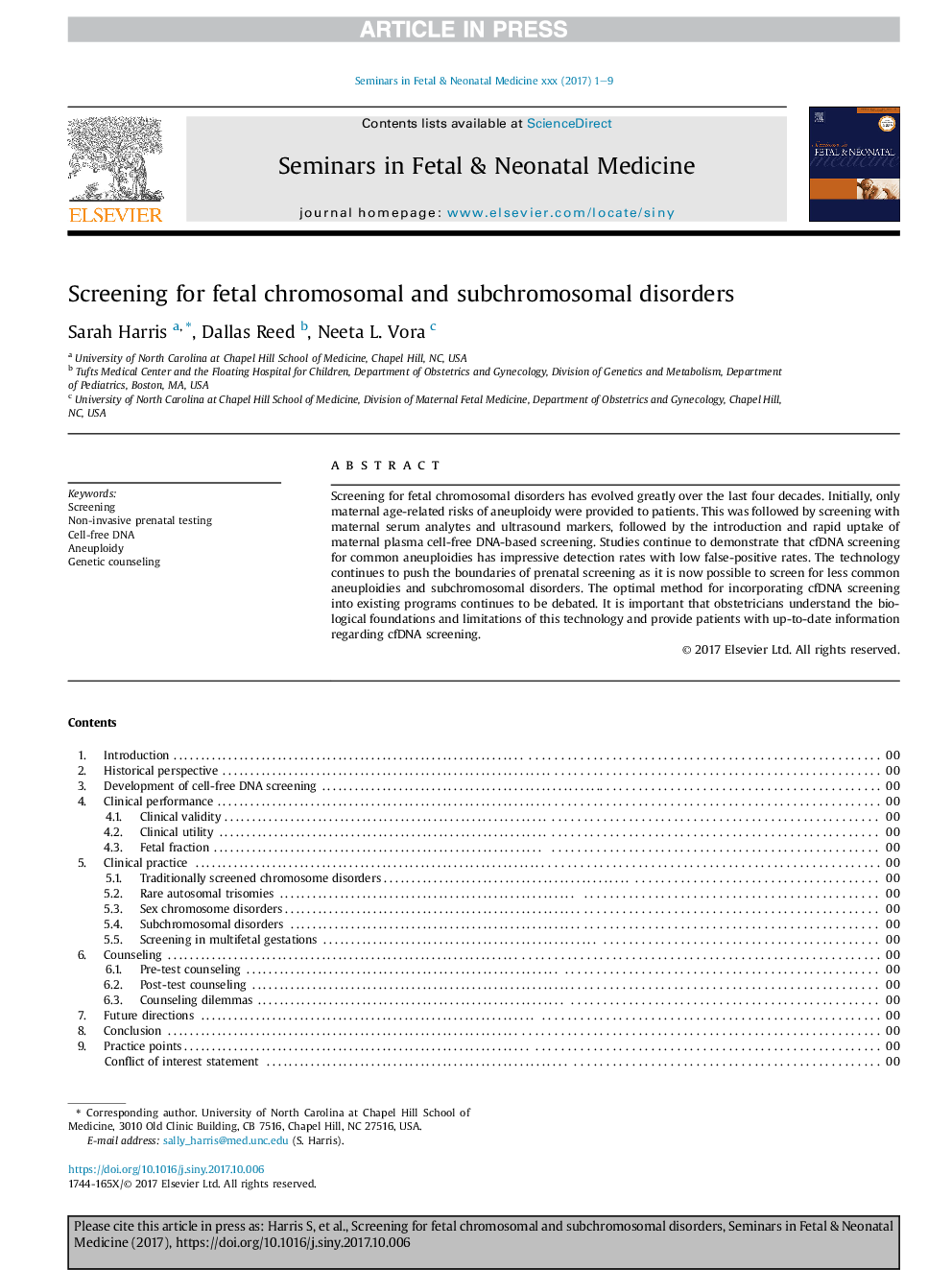| Article ID | Journal | Published Year | Pages | File Type |
|---|---|---|---|---|
| 8784288 | Seminars in Fetal and Neonatal Medicine | 2018 | 9 Pages |
Abstract
Screening for fetal chromosomal disorders has evolved greatly over the last four decades. Initially, only maternal age-related risks of aneuploidy were provided to patients. This was followed by screening with maternal serum analytes and ultrasound markers, followed by the introduction and rapid uptake of maternal plasma cell-free DNA-based screening. Studies continue to demonstrate that cfDNA screening for common aneuploidies has impressive detection rates with low false-positive rates. The technology continues to push the boundaries of prenatal screening as it is now possible to screen for less common aneuploidies and subchromosomal disorders. The optimal method for incorporating cfDNA screening into existing programs continues to be debated. It is important that obstetricians understand the biological foundations and limitations of this technology and provide patients with up-to-date information regarding cfDNA screening.
Related Topics
Health Sciences
Medicine and Dentistry
Obstetrics, Gynecology and Women's Health
Authors
Sarah Harris, Dallas Reed, Neeta L. Vora,
